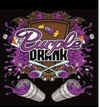Have you ever seen the purple stuff? Purple cabbage, purple sweet potatoes, black rice, eggplant, or purple cauliflower? Do you know that all of these purple-coloured foods contain a high concentration of powerful plant compounds, as the natural purple hue in them offers a wide array of health benefits? Yes, these purple-coloured vegetables, fruits and grains are delicious, highly nutritious and visually appealing as well.
Here are some purple foods and their health benefits;
1. Blackberries:
Despite being called blackberries, Blackberries are among the most well-known purple fruits due to the deep purple colour that looks like black. These berries contain a lot of juice and are packed with nutrition and anthocyanin pigments.
Anthocyanins contain high concentrations of antioxidant-packed micronutrients called polyphenols, giving foods purple, red or blue colours. They are found in other fruits, vegetables, and grains as well. They aid in protecting your cells from any damage and reduce inflammation that may lead to adverse health conditions. Eating food rich in anthocyanin like blackberries helps protect against chronic conditions like diabetes, heart disease and certain cancers.
Blackberries also contain fibre and micronutrients, like folate, vitamin C, magnesium, manganese and potassium. Blackberries are not just highly nutritious but are also tasty and sweet.
2. Purple Sweet Potatoes:
All the sweet potatoes are highly nutritious, as they provide many minerals and vitamins, like vitamin C, B vitamins, provitamin A, and potassium. Purple sweet potatoes also contain anthocyanin antioxidants along with all the other vitamins.
They may have anti-inflammatory properties that help protect against certain types of cancer, like colon cancer and obesity. Many people use purple sweet potatoes to substitute for more common orange-coloured sweet potatoes in most recipes.
3. Eggplants:
Eggplants, or some may call them aubergines, come in various colours, but purple-skinned eggplants are the most common ones. They are not as nutrient-dense as some of the other purple-coloured foods, but eggplants are high in manganese and antioxidants, minerals essential for metabolism and bone health. According to different studies, a purple eggplant peel is especially concentrated in the anthocyanin nasunin, which has anti-inflammatory and heart-protective properties.
4. Purple Mangosteens:
Mangosteens are fragrant fruits with a tough, deep purple coloured outer rind that must be removed to devour the tangy, slightly sweet fruit under the peel. Mangosteens are full of fibre, folate, and B vitamins, which are essential for many important processes in the human body, including producing red blood cells and DNA. Mangosteens also contain xanthones, which are antioxidants that provide neuroprotective, anticancer and anti-inflammatory properties.
5. Acai berries:
Acai berries are deep purple-coloured, small fruits that have become famous in terms of wellness due to their high concentration of anthocyanins.
Acai berries can be added to various recipes, including the health-conscious favourite's acai bowls consisting of frozen and blended acai berries. They are also used to make powders, concentrated supplements for medicinal uses and various juices. Acai berries are known to improve your health in many ways like it may increase blood antioxidant content and help in the reduction of blood sugar levels, inflammation and high blood pressure.
6. Purple Cabbages:
Every variety of cabbage is exceptionally nutritious. However, purple cabbage, which is also known as red cabbage, contains anthocyanins. They boost the health-promoting properties of this cruciferous purple vegetable even higher. Purple cabbage is also full of fibre, provitamin A, and vitamin C. It also provides potent anti-inflammatory effects due to the high levels of powerful plant compounds in its highly pigmented purple leaves.
Fun Fact:
Purple drank is a name given to a recreational purple-coloured drug created by mixing big doses of prescription cough syrup into hard candy and carbonated soft drinks. People usually sip it to experience euphoria and dissociation from one's bodies. It often acts as a sedative whose effects last three to six hours.
This recreational drug also goes by the name "lean" because, similar to being extremely drunk, people often literally have to lean against something to stand up after it's consumed and once the effects occur.

